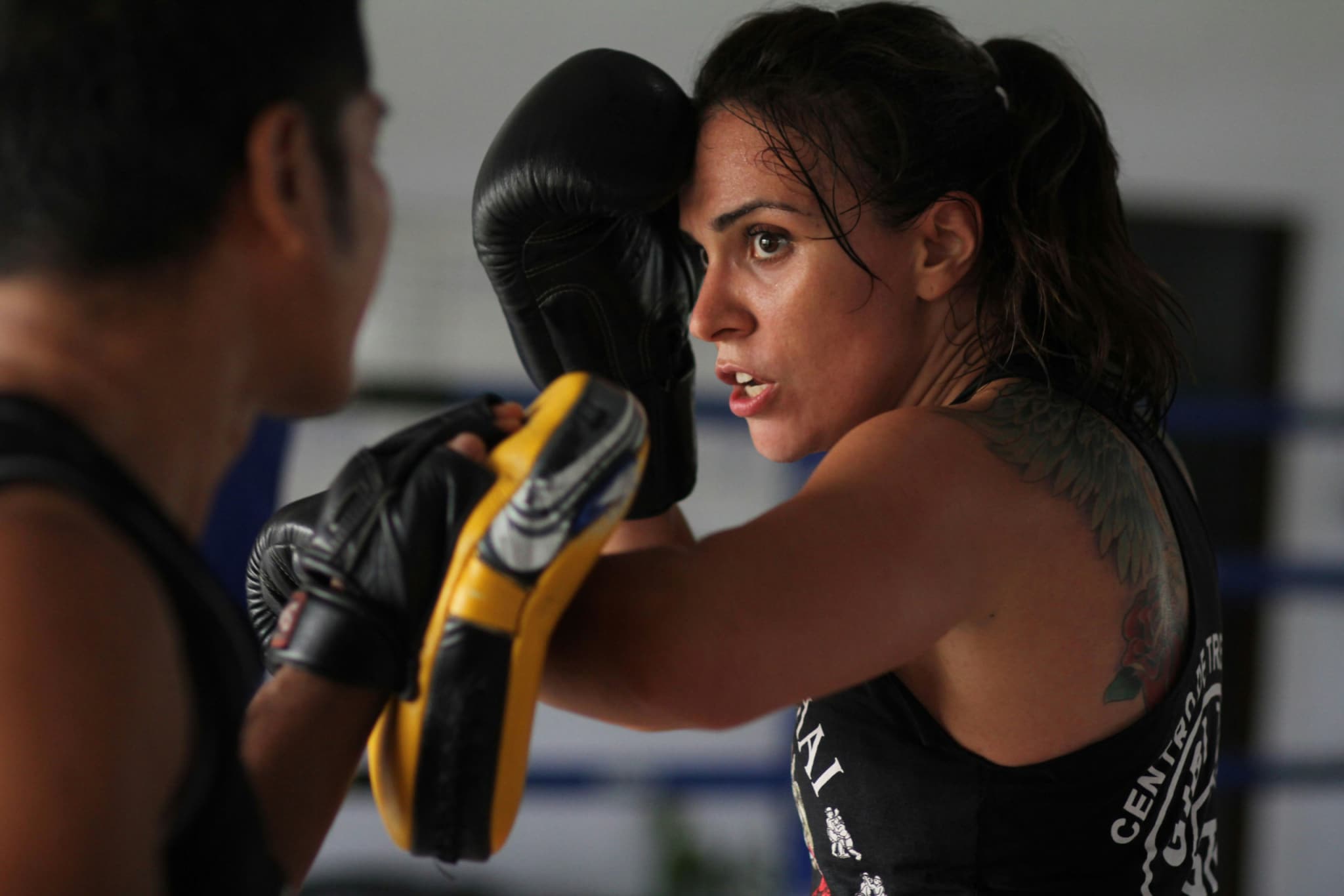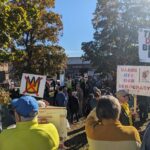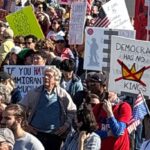
In the new book, The Future Is Collective: Effective Workplace Strategies for Building a Culture of Care, organizer and lawyer Niloufar Khonsari discusses how nonprofits and movement organizations can and should create workplace cultures that better align with values of justice and liberation.
The following text is excerpted from The Future Is Collective: Effective Workplace Strategies for Building a Culture of Care (North Atlantic Books, 2025) by Niloufar Khonsari. Reprinted by permission of North Atlantic Books.
Whatever we call it, collective governance has old roots in liberatory social movements and ancestral lineages of BIPOC individuals working toward justice. In the 1950s and ’60s, American activist Ella Baker was putting participatory democracy and collective leadership on our cultural map. A key figure in the civil rights movement, Baker significantly shaped the practice of participatory democracy long before it gained widespread recognition. Her philosophy centered on the power of collective action, based on the belief that people working together—rather than following a single charismatic leader—was the path to true change.
While the concept of participatory democracy often gets attributed to student activists in the 1960s, Baker’s work was pivotal in advancing these ideas. Baker championed the idea that everyone should have a voice and play an active role in decision-making, not just those at the top. Her grassroots approach sought to minimize hierarchy, ensuring direct involvement from the people most impacted by injustice. She believed in the power of people working together to make decisions, rather than relying on a single leader. She was a champion of the idea that everyone should have a voice and play a part in shaping the direction of movements.[…]
As Carol Mueller highlights in the…Black Studies Reader, Baker’s philosophy was foundational to the Student Nonviolent Coordinating Committee and other movements, advocating for decentralized, group-centered leadership over charismatic, hierarchical models.3 This commitment to empowering individuals to act collectively on their own behalf transformed the landscape of social justice activism in America.
Ella Baker’s advocacy for decentralized leadership connects profoundly with broader traditions of collective action and mutual support. Her commitment is mirrored in the values of African American collectives, which have cultivated a culture of mutuality for centuries. In her book Collective Courage, Dr. Gordon Nembhard highlights how African Americans have long relied on values of mutual aid and fraternal organizations.4 Dating back to the Civil War, African Americans pooled their resources and built cooperative ownership models rooted in survival and collective empowerment. These values, like those found in some Indigenous governance models, continue to shape cooperative organizations today.
Similarly, in 1956 in the Basque region of Spain, Spanish priest and activist Jose Maria Arizmendiarrieta founded a worker cooperative in the town of Mondragon that essentially organized the entire town based on collective governance. Over the years, Mondragon grew into one of the world’s largest networks of worker-owned cooperatives, with businesses spanning industries such as aerospace, elevators, bicycles, and wind turbines. The cooperative operates with salary caps for executives and equal voting for worker-owners on key decisions, and it shares resources across co-ops during tough periods.5 During times of economic challenge, workers voted to temporarily reduce all their salaries or hours to preserve jobs. The New Yorker highlighted how Mondragon has thrived for nearly seventy years: “Its persistence suggests that there are fairer and more sustainable ways of doing business….The collective has a unique history, and its density powers a rare feedback loop in which cooperative values shape institutions, which then reinforce the same values, spiraling outward to define an entire way of life. Mondragon is an inspiring and successful experiment.”6
But the values-based collective spirit that informs these organizational paradigms has its roots even further back in time. All of these systems and practices that are now being heralded as “new” and “revolutionary” are not new. They overlap significantly with older frameworks but are being repackaged with modern terms. For example, holacracy, a term for collective governance championed by tech entrepreneur Brian Robertson, draws heavily from sociocracy. Sociocracy is a governance system based on equal, consent-based decision-making than crediting a single founder, it draws on influences from earlier movements, particularly the thought of early twentieth-century Quaker activist Kees Boeke and engineer Gerard Endenburg.7 Inspired by cybernetics, this system reflects patterns and feedback loops found in nature, making decision-making as dynamic and responsive as ecosystems themselves. And this wisdom inherent in the natural world—from fractals to seasons to the intelligent and interconnected network under every tree on earth—has been practiced, honored, and transmitted on many levels by Indigenous people for thousands of years.
Indigenous Wisdom
Indigenous people around the world have long been at the forefront of participatory and collective governance. Yet in a society that is driven by self-promotion, novelty, and trying to be first, Indigenous ways and wisdom are often overlooked or marginalized. For example, in Reinventing Organizations: A Guide to Creating Organizations Inspired by the Next Stage in Human Consciousness, Frédéric Laloux introduces the “Teal Revolution” as a groundbreaking framework for collective governance.8 Yet Indigenous communities have modeled collective decision-making, shared leadership, and care for one another long before modern management theories emerged. As Jessica Prentice points out in her 2016 article “The Most Dangerous Notion in ‘Reinventing Organizations,’” this oversight is not uncommon.9 She contrasts Laloux’s ideas with those explored in Tending the Wild by M. Kat Anderson, which details the sophisticated land management systems of Native Americans in California.
These Indigenous practices, rooted in stewardship, interdependence, and community care, were highly effective during continuous use over centuries. Early settlers, however, failed to recognize the wisdom in these systems and imposed their own, often destructive, approaches to land and governance.
In Braiding Sweetgrass, Robin Wall Kimmerer illuminates how deep the Indigenous roots of collective governance are, drawing on her Potawatomi heritage.10 She explains that Indigenous governance is grounded in reciprocity and respect for the natural world, where decision-making is rooted in interdependence and mutual care. Much like the “Honorable Harvest,” which emphasizes balance and respect, these systems prioritize the collective well-being of all living beings, including the environment and future generations. These values create collective structures that are inclusive, thoughtful, and committed to sustainability and collective well-being.
Similar to the Indigenous wisdom of the Potawatomi people that emphasizes interconnection and reciprocity, my own Iranian roots taught me the importance of community and collective well-being. Decisions and support flowed through the community with an understanding that our well-being was interdependent. This deep sense of connection, passed down through generations and across borders, continued to surface for me over time, and I wanted to explore how I could contribute to fostering this interconnected care in a broader context.
Notes
- Mueller, Carol. “Ella Baker and Origins of Participatory Democracy,” The Black Studies Reader. Ed by Jacqueline Bobo, Cynthia Hudley, and Claudine Michel. New York: Routledge, 2004.
- Gordon Nembhard, Jessica. Collective Courage: A History of African American Cooperative Economic Thought and Practice. University Park: Penn State University Press, 2024.
- Romeo, Nick. “How Mondragon Became the World’s Largest Co-op.” The New Yorker, August 27, 2022, https://www.newyorker.com/business/currency/how-mondragon-became-the-worlds-largest-co-op.
- Romeo, “World’s Largest Co-op.”
- Endenburg, Gerard. Sociocracy: The Organization of Decision-Making. Delft: Eburon, 1998.
- Laloux, Frédéric, and Ken Wilber. Reinventing Organizations: A Guide to Creating Organizations Inspired by the Next Stage of Human Consciousness. Brussels: Nelson Parker, 2014.
- Prentice, Jessica. “The Most Dangerous Notion in ‘Reinventing Organizations.’” Medium, May 25, 2016, https://medium.com/@jessicajprentice/the-most-dangerous-notion-in-reinventing-organizations-9032930295e2.
- Kimmerer, Robin Wall. Braiding Sweetgrass. Minneapolis: Milkweed Editions, 2022.














